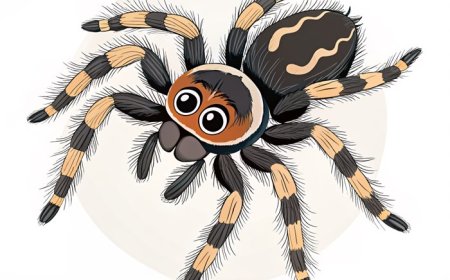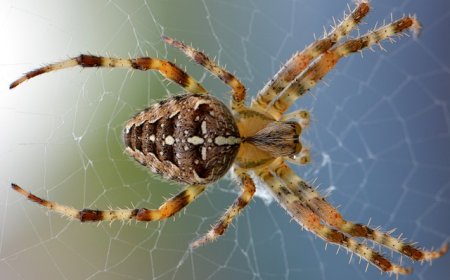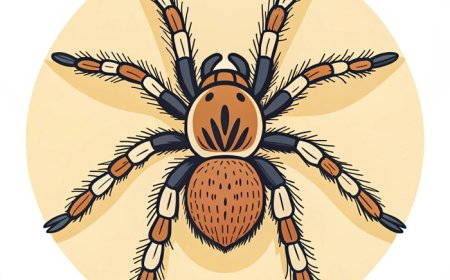Harvestmen Not a Spider But Still an Arachnid!
Meet the harvestman, also called daddy longlegs! Learn how this leggy creature is different from spiders, what it eats, where it lives, and why it’s completely harmless to humans.
🕷️ Introduction
You’ve probably seen a harvestman before, even if you didn’t know its name. With their tiny round bodies and very long, thin legs, harvestmen are often mistaken for spiders and are commonly called “daddy longlegs.” But did you know they’re not actually spiders?
Harvestmen belong to the arachnid family, like spiders, scorpions, and ticks, but they are in a separate group called Opiliones. They are harmless, helpful creatures that play an important role in nature. People often see them walking slowly across the ground, walls, or leaves—especially in gardens, forests, or under porches.
What Do Harvestmen Look Like?
Harvestmen have very small, oval or round bodies with eight long, delicate legs. Unlike spiders, which have two distinct body parts (a cephalothorax and abdomen), harvestmen have a body that looks like one smooth segment, almost like a tiny ball on legs.
Their legs are their most noticeable feature—some species have legs 10 times longer than their body! These long legs help them feel around in the dark, walk over tricky surfaces, and even wiggle loose if a leg is caught. In fact, a harvestman can shed a leg to escape danger and still survive.
Are Harvestmen Spiders?
Although they look like spiders, harvestmen are not true spiders. They belong to a different order of arachnids and have some big differences:
- They do not spin webs.
- They don’t have fangs or venom.
- Their eyes are simple and located on a small bump on their head.
- They eat differently, often scavenging or eating dead things.
These differences make harvestmen unique among arachnids, and they are often misunderstood.
What Do Harvestmen Eat?
Harvestmen are omnivores and scavengers. They eat a little bit of everything, including:
- Dead insects and animals
- Fungi
- Plant material
- Small bugs or larvae
- Droppings or other decaying organic matter
They don’t chase or trap their food. Instead, they walk slowly and explore, using their legs to sense objects and find meals. Because they clean up dead material, harvestmen are sometimes called “nature’s janitors.”
Where Do Harvestmen Live?
Harvestmen live all over the world, except in Antarctica. They are especially common in moist, shady places like under leaves, rocks, logs, or boards. You can often find them in:
- Forests and grasslands
- Gardens and flower beds
- Basements, garages, and sheds
- Climbing up trees, walls, or fences
They are most active at night or during cooler parts of the day. In the fall, you may see large groups of harvestmen gathering together on walls or tree trunks to stay warm.
Are Harvestmen Dangerous?
Not at all! Harvestmen are completely harmless to humans. They have no venom, no fangs, and don’t bite. There is a popular myth that they are the most venomous spider in the world but can’t bite humans. That’s not true—they aren't spiders, and they don’t have venom at all!
Instead, they rely on their long legs and quick movement to escape danger. If threatened, some harvestmen will emit a bad smell from tiny scent glands to scare off predators. They may also wiggle or play dead.
Life Cycle and Behavior
Harvestmen start their life as tiny eggs laid in moist soil or under debris. When the eggs hatch, the baby harvestmen look like miniature adults. They grow by molting, shedding their outer skin several times as they get bigger.
Most species live for one year, though some may survive longer. They are solitary, but they may gather in groups during cold or dry weather. These groups are harmless and help them stay safe and warm.
🌟 Fun Facts About Harvestmen
- The name “harvestman” comes from the fact that they’re often seen during late summer and harvest time.
- They do not spin webs and cannot bite humans.
- If a leg gets caught, they can let it fall off to escape—a trick called autotomy.
- Harvestmen have been around for over 400 million years—longer than dinosaurs!
- Some species can release a bad smell to keep predators away.
👧 Kid-Friendly Summary
Harvestmen are not spiders, even though they look like them. They have long legs, tiny round bodies, and walk around looking for food like dead bugs and plants. They can’t bite, don’t have venom, and are completely harmless. They help keep nature clean and are fun to spot in gardens or forests.
📚 Vocabulary Words
Harvestman – An arachnid with long legs and a round body, not a true spider
Opiliones – The scientific order of harvestmen
Venom – A poison used by some animals to hurt prey (harvestmen do not have it)
Scavenger – An animal that eats dead plants or animals
Autotomy – The ability to drop a body part to escape danger
Molting – Shedding old skin to grow
Arachnid – An animal with 8 legs, such as a spider, scorpion, or harvestman
Scent gland – A body part that releases a smell to warn or protect
❓ Interactive Quiz (8 Questions)
1. What is another name for a harvestman?
A. Wolf spider
B. Daddy longlegs
C. Orb-weaver
D. Ground beetle
2. Are harvestmen true spiders?
A. Yes
B. No
C. Only as babies
D. Only in fall
3. Do harvestmen have venom?
A. Yes, very strong
B. Only in summer
C. No, they don’t
D. Only females
4. How many legs do harvestmen have?
A. 6
B. 10
C. 8
D. 4
5. What do harvestmen eat?
A. Just leaves
B. Just insects
C. A mix of dead plants, animals, and bugs
D. Only flowers
6. Where are harvestmen usually found?
A. In water
B. In hot deserts
C. In moist, shady places
D. On mountaintops
7. What do harvestmen do if a predator grabs them?
A. Bite hard
B. Fly away
C. Drop a leg and run
D. Growl
8. Are harvestmen helpful to the environment?
A. No
B. Yes, they clean up dead things
C. Only at night
D. Only during winter




















































